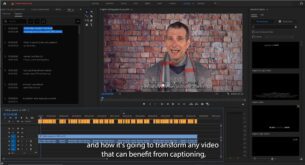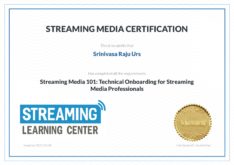Got an email today from a colleague today that triggered the headline thought (time to switch from VP6 to H.264). His rationale was that now that MPEG-LA has extended the royalty-free period for free H.264 Internet video, it was time to change over to H.264. He was wondering whether H.264 could maintain the same quality as VP6 at 75% of the data rate; he’s going to run some experiments and see.
Sounds a bit ambitious to me, but you never know till you try. At the very worst, though, he’ll be able to drop the video data rate perhaps 10-15% and maintain the same quality. On the audio side of things, AAC is so much more efficient than MP3 that he should be able to drop the audio data rate by 33%; say from 96 kbps to 64 kbps, with no noticeable difference at all.
Cutting your overall data rate by 15% saves 15% of bandwidth costs, and also makes your video easier to stream to low bitrate customers. Or, you can increase the size of your video frame and keep the same data rate.
One other key reason to switch over is that Flash Player 10.1 will accelerate H.264 video playback via the graphics card (GPU), but not VP6. So your H.264 videos should play back much more efficiently than VP6, particularly HD videos. I think this feature alone, which will be available on both the Mac and Windows platforms, will accelerate the adaption of Flash Player 10.1 significantly.
If you plan things correctly, you should be able to create a file that can perform double duty for both your Flash or Silverlight web player, and also for uploading to iTunes (say 640×360@ 800 kbps using the Baseline profile for playback on iPod/iTouch/iPad). Or, go bigger, and upload an 854×480 file (Main Profile, 1.2 mpbs) and use that for iPad-bound iTunes uploads. That saves encoding time and file storage and administration.
So, multiple reasons to switch over to H.264. If you need a jump start, click here to read So You Want to Get to Know H.264 on this web site, here for a tutorial on H.264 encoding parameters, and below for the following tutorials:
Producing H.264 for Flash with the Adobe Media Encoder
Producing H.264 with Apple Compressor
 Streaming Learning Center Where Streaming Professionals Learn to Excel
Streaming Learning Center Where Streaming Professionals Learn to Excel







